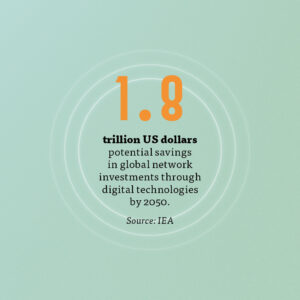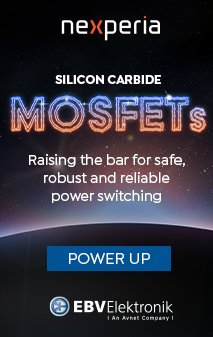To connect the multitude of renewable energy sources and manage the increasing electrification of industry, transport, and heating, energy distribution networks must be modernised and expanded. This will make the network smarter overall, and new technologies such as high-voltage direct current (HVDC) transmission will enhance system efficiency.
The energy transition poses significant challenges for power grids. Today, electricity flows in one direction from the power plant to the transmission network and then to the consumer. In the networks required for an All Electric Society, electricity flows from hundreds of thousands of small, decentralised plants in all directions. As photovoltaic or wind power plants feed electricity irregularly in terms of time and quantity into all voltage levels, the load on the distribution networks fluctuates considerably. This new type of energy distribution heavily burdens the distribution network, making the infrastructure increasingly inefficient. Simultaneously, capacities must be expanded to reliably supply the growing number of electricity consumers.
“To be clear: Our current power grid is not designed for this. It is not energy-transition capable,” emphasises Wolfgang Weber, Chairman of the Management Board of the German Electrical and Digital Industry Association ZVEI. The association calls for intelligence to be incorporated into the system in addition to physical expansion.
Smart Grid: The Intelligent Power Grid of the Future
Smart grids coordinate electricity generation, distribution, and storage by continuously collecting and analysing data from IoT-enabled sensors and devices. This allows optimal control and utilisation of power grids, contributing to stable and efficient energy supply. These smart grids enable two-way communication and the return of excess electricity to the grid through smart meters. The increasing use of energy management devices and consumer involvement helps providers reduce peak demand and delay infrastructure modernisation.
Smart Meters: Intelligent Meters for Consumers and Prosumers
On the consumer side, smart meters are the core element of future energy supply networks. These intelligent electricity meters measure energy consumption in real-time and enable monitoring and optimisation. They are also crucial for prosumers – consumers who generate their own energy, for example through their solar panels. A report by the European Commission predicts that the use of smart meters can lead to annual energy savings of up to ten percent, benefiting both consumers and the environment.
“By digitising our networks, our power systems will become more reliable and secure, and our utilities will be better able to manage the balance of supply and demand,” explains IEA Executive Director Fatih Birol.
Expansion of the Network Required
However, to meet the requirements of an All Electric Society, significant network expansion is necessary: according to the “New Power Systems Report” published by the classification society DNV, global network capacity must increase 25-fold, with annual network expenditure needing to more than double to 970 billion US dollars by 2050. For Europe, this would mean, according to the industry association Eurelectric, that approximately 67 billion Euro per year should be invested in the power distribution network from 2025 to 2050, twice the current amount. This figure is relativised when considering that this sum is only 20 percent of what the EU spent on fossil fuel imports in 2023.
More Efficient Transmission with Direct Current
Network expansion is no longer limited to established alternating current technology, but increasingly includes high-voltage direct current (HVDC) transmission lines. When transmitting direct current over long distances at a voltage of 525 kilovolts, transmission losses are low compared to comparable alternating current connections. Additionally, direct current networks (DC networks) require fewer components. Renewable energy sources, which typically also operate with direct current, can be more easily integrated.
Higher Voltage, Lower Raw Material Consumption
The transformation of the energy system requires enormous amounts of raw materials, such as copper and aluminium for lines connecting renewable generators to the grid.
“An increase in system voltage can help here. Because of the associated simultaneous decrease in currents, significant raw material savings can be achieved,” explains Andreas Hensel, Group Leader of High-Performance Electronics and System Technology at the Fraunhofer Institute for Solar Energy Systems ISE.
Increasing the output voltage from 800 V to 1,500 V alternating current leads to a reduction in cable cross-section by approximately 75 percent with the same performance. Additionally, laying and connecting smaller cable cross-sections is much easier, reducing installation costs.





